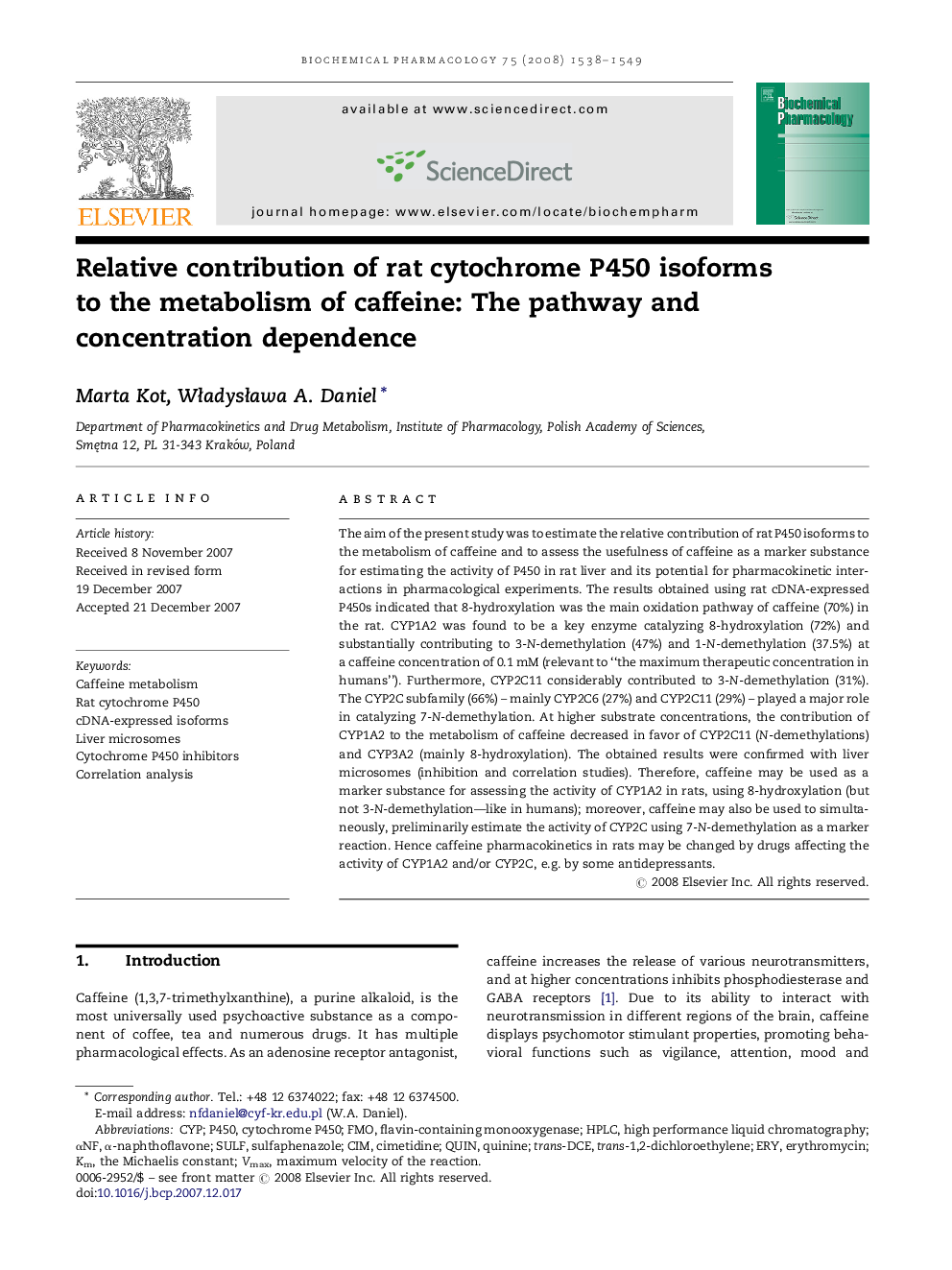| Article ID | Journal | Published Year | Pages | File Type |
|---|---|---|---|---|
| 5824357 | Biochemical Pharmacology | 2008 | 12 Pages |
The aim of the present study was to estimate the relative contribution of rat P450 isoforms to the metabolism of caffeine and to assess the usefulness of caffeine as a marker substance for estimating the activity of P450 in rat liver and its potential for pharmacokinetic interactions in pharmacological experiments. The results obtained using rat cDNA-expressed P450s indicated that 8-hydroxylation was the main oxidation pathway of caffeine (70%) in the rat. CYP1A2 was found to be a key enzyme catalyzing 8-hydroxylation (72%) and substantially contributing to 3-N-demethylation (47%) and 1-N-demethylation (37.5%) at a caffeine concentration of 0.1Â mM (relevant to “the maximum therapeutic concentration in humans”). Furthermore, CYP2C11 considerably contributed to 3-N-demethylation (31%). The CYP2C subfamily (66%) - mainly CYP2C6 (27%) and CYP2C11 (29%) - played a major role in catalyzing 7-N-demethylation. At higher substrate concentrations, the contribution of CYP1A2 to the metabolism of caffeine decreased in favor of CYP2C11 (N-demethylations) and CYP3A2 (mainly 8-hydroxylation). The obtained results were confirmed with liver microsomes (inhibition and correlation studies). Therefore, caffeine may be used as a marker substance for assessing the activity of CYP1A2 in rats, using 8-hydroxylation (but not 3-N-demethylation-like in humans); moreover, caffeine may also be used to simultaneously, preliminarily estimate the activity of CYP2C using 7-N-demethylation as a marker reaction. Hence caffeine pharmacokinetics in rats may be changed by drugs affecting the activity of CYP1A2 and/or CYP2C, e.g. by some antidepressants.
